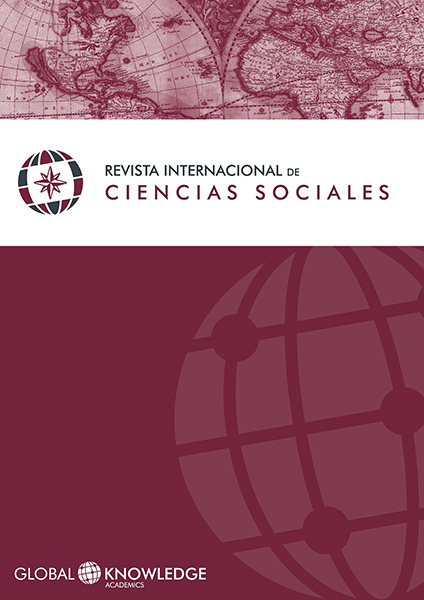The Complexity of Pampering Obesogenic Environments
DOI:
https://doi.org/10.37467/gka-revsocial.v5.473Keywords:
Self-Care, Obesogenic Environment, Post-Organic BodyAbstract
Foucault conceived the human being as defined by biopower forces. After that, the industrial society treated the body as an element of the production process, and the care of the self was derived to healthcare institutions. Recently, Paula Sibilia studied the industrial human being from the capitalism on his transformation through technology and digital hybrids. She thinks that the human body could be at the end in the form we know it. But in the perspectives of both Foucault and Sibilia, the body projects could be at their own obsolescence because they leave a key element aside: the obesogenic environment which is implicit into the current modern technological society. This abstract pretends to visualize how body projects and modernity are interconnected and confronted, from their assumptions and fundamentals, against obesity.
Downloads
Global Statistics ℹ️
|
1102
Views
|
313
Downloads
|
|
1415
Total
|
|
References
Baudrillard, J. (1986). La société de consommation . Paris: Gallimard.
Berger, P. L., & Samuel P. Huntington (2002). Globalizaciones múltiples. La diversidad cultural en el mundo contemporáneo . Barcelona: Paidós.
Boyer, R. (2013). Los financieros, ¿destruirán el capitalismo? Buenos Aires: Miño y Dávila.
Canguilhem, G. (1976). El conocimiento de la vida . Barcelona: Anagrama.
Egger, G. y Swinburn, B. (1997). An “ecological” approach to the obesity pandemic. En Education and debate , 315, pp. 315-477. DOI: https://doi.org/10.1136/bmj.315.7106.477
Foucault, M. (1984). Des espaces autres. Conferencia dicada en el Cercle des études architecturals, 14 de marzo de 1967 (Pablo Blitstein y Tadeo Lima trad.). Architecture, Mouvement, Continuit (5).
Foucault, M. (1986). Historia de la sexualidad: 2 El uso de los placeres (Martí Soler trad.). México: Siglo XXI.
Foucault, M. (1994). Ditset écrits (1954-1988), v. IV (1980-1988). Paris: Gallimard. DOI: https://doi.org/10.14375/NP.9782070739899
Foucault, M. (2002). La hermenéutica del sujeto: curso en el Collège de France, 1981-1982. México: Fondo de Cultura Económica.
Fried Schnitman, D. (comp) (1994). Nuevos paradigmas, cultura y subjetividad . Buenos Aires: Paidós.
Fukuyama, F. (1992). El fin de la historia y el último hombre (P. Elías trad.). México: Planeta.
Geertz, J. C. (1980). El surgimiento de la antropología moderna. American Scholar, 49(2), pp. 165-179.
Giddens, A. (1995). La transformación de la intimidad: sexualidad, amor y erotismo en las sociedades modernas. Madrid: Cátedra.
Goffman, I. (1981). La presentación de la persona en la vidacotidiana (Hildegarde B. Torres Perrén trad.). Buenos Aires: Amorrortu.
Habermas, J. (1990). La lógica de las ciencias sociales. Madrid: Tecnos. “Sobre la problemática de la comprensión del sentido en las ciencias empírico-analíticas de la acción” pp. 173-203.
Haslam, D. (2007). Obesity: a medical history. Obesity Reviews, 8 (1), pp. 31-36. DOI: https://doi.org/10.1111/j.1467-789X.2007.00314.x
Jameson, F. (1993). Conflictos interdisciplinarios en la investigación sobre cultura. ALTERIDADES, 3(5), pp. 93-117.
Martin-Barbero, J. (1993). La comunicación en las transformaciones del campo cultural. ALTERIDADES, 3(5), pp. 59-68.
Méndez Rubio, A. (2003). La apuesta invisible. Cultura, globalización y crítica social. España: Montesinos.
Morin, E. (2004). Introducción al pensamiento complejo. Barcelona: Gedisa.
Pitkin, H. (1984). Wittgenstein: el lenguaje, la política y la justicia. Centro de Estudios Constitucionales. Madrid: Centro de estudios Constitucionales.
Quintanas, A. (2011). Higienismo y medicina social: poderes de normalización y formas de sujeción de las clases populares. ISEGORÍA, 44(1), pp. 273-284. DOI: https://doi.org/10.3989/isegoria.2011.i44.730
Reguillo, R. (2004). Los estudios culturales. El mapa incómodo de un relato inconcluso. Aula abierta. En Instituto de la Comunicación de la Universidad Autónoma de Barcelona. Disponible en http://www.portalcomunicacion.com/esp/incom.html
Rosales Ortega, R., Gutiérrez Ramírez, S. & Torres Franco, J. L. (2006). La interdisciplina en las ciencias sociales. Barcelona: Anthropos.
Schilling, C. (1993). The Body and Social Theory . Londres: SAGE.
Sen, A. (1998). Teoría del desarrollo a principios del siglo XXI. En L. Emmerij y J. Núñez del Arco, El desarrollo económico y social en los umbrales del siglo XXI. Washington: BID.
Sibilia, P. (2009). El hombre postorgánico: cuerpo, subjetividad y tecnologías digitales. Buenos Aires: Fondo de Cultura Económica.
Sloterdijk, P. (2000). Normas para el parque humano: una respuesta a la carta sobre el humanismo de Heidegger (Teresa Rocha trad.). Madrid: Siruela.
Stiglitz, J. (2012). El precio de la desigualdad. México:Taurus.
Swinburn, B., Eggar, G., & Raza., F. (1999). Dissecting obesogenic environments; the development and application of a framework for identifying and prioritizing environmental interventions for obesity. Preventive Medicine , 29(6), pp. 563-570. DOI: https://doi.org/10.1006/pmed.1999.0585
Swinburn, B., Egger. & G, Raza (1999).Dissecting obesogenic environments: the development and application of a framework for identifying and prioritizing environmental interventions for obesity. Preventive Medicine, 29(6) pp. 563-70. DOI: https://doi.org/10.1006/pmed.1999.0585
Touraine, A. (2002). A la búsqueda de sí mismo: diálogo sobre el sujeto . Barcelona: Paidós. “La emergencia del sujeto” pp. 87-96. “El sujeto como relación consigo mismo” pp. 97-121.
Turner, B. S. (1994). «Avances recientes en la teoría del cuerpo». Revista Española de Investigaciones Sociológicas , 68 (94), p. 11-39. DOI: https://doi.org/10.2307/40183756
Turner, B. S. (Ed.) (1993). Contemporary Problems in the Theory of Citizenship. En B. Turner et al. (Ed.), Citizenship and Social Theory . West Sussex: SAGE.
Vigarello, G. (1991). Lo limpio y lo sucio: la higiene del cuerpo desde la Edad Media . Madrid: Alianza.
Downloads
Published
How to Cite
Issue
Section
License
Those authors who publish in this journal accept the following terms:
-
Authors retain copyright.
-
Authors transfer to the journal the right of first publication. The journal also owns the publishing rights.
-
All published contents are governed by an Attribution-NoDerivatives 4.0 International License.
Access the informative version and legal text of the license. By virtue of this, third parties are allowed to use what is published as long as they mention the authorship of the work and the first publication in this journal. If you transform the material, you may not distribute the modified work. -
Authors may make other independent and additional contractual arrangements for non-exclusive distribution of the version of the article published in this journal (e.g., inclusion in an institutional repository or publication in a book) as long as they clearly indicate that the work was first published in this journal.
- Authors are allowed and recommended to publish their work on the Internet (for example on institutional and personal websites), following the publication of, and referencing the journal, as this could lead to constructive exchanges and a more extensive and quick circulation of published works (see The Effect of Open Access).













